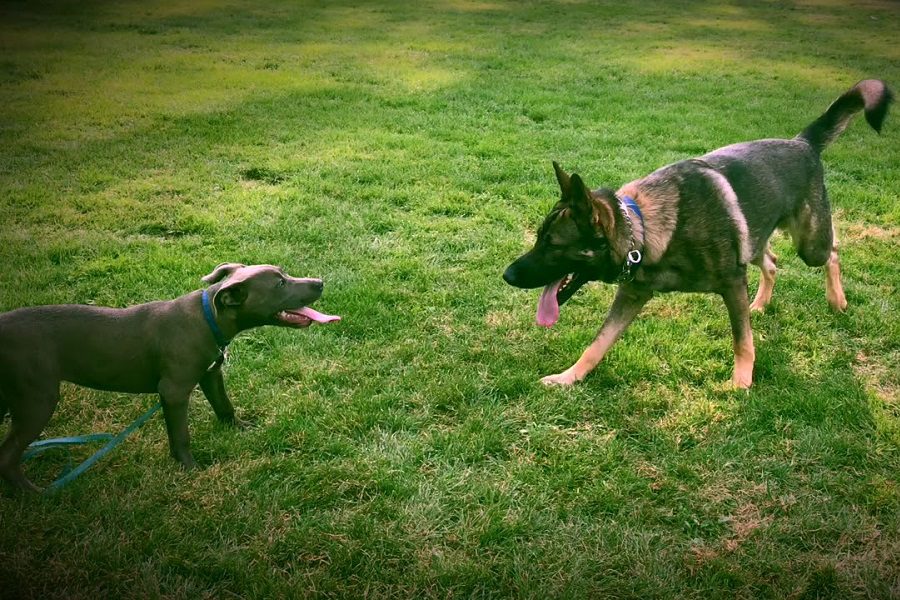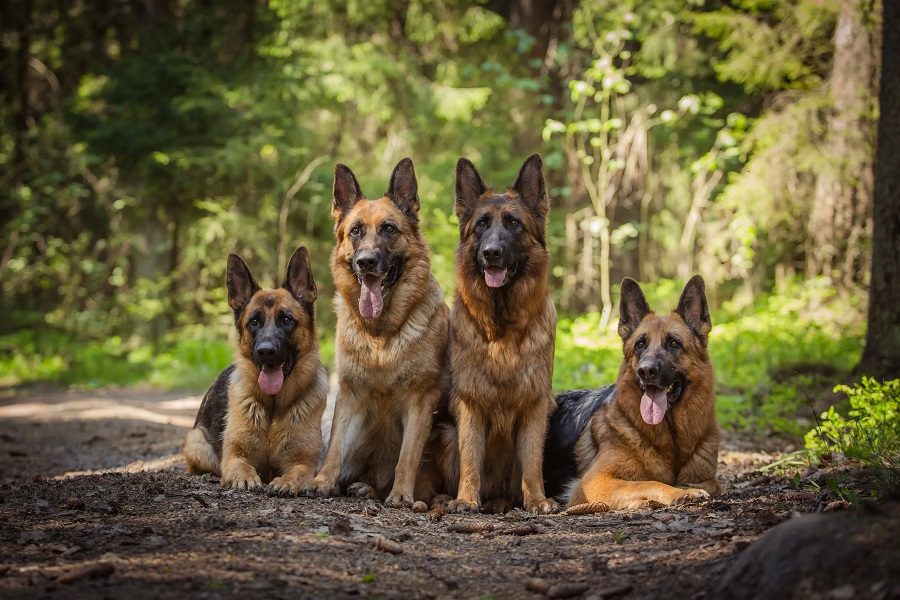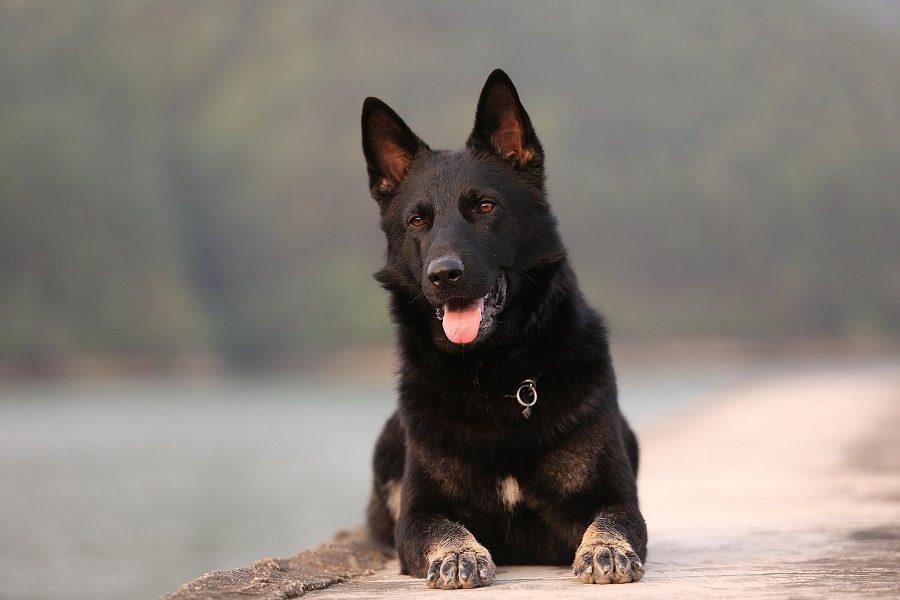Last Updated: 2 years ago
What do you get when you club the charismatic personality of a German Shepherd and the fierce protectiveness of the Doberman Pinscher?
You get a King Shepherd, a larger sized German Shepherd that has been selectively bred as a working dog capable of performing a whole range of duties that include rescue operations and police jobs.
Back home, it is a loyal companion and the fiercest protector that your family will ever need.
The King Shepherd is a rare breed though, as recognized by the American Rare Breed Association (ARBA), and the International Rarities & North American Kennel Club (NAKC).
Most people assume that the King Shepherd is in essence, an oversized German shepherd with similar behavioral traits. They couldn’t be more wrong. The King Shepherd is a very unique dog.
If you are considering getting a King Shepherd home, then this guide will help you understand more about the dog including behavioral traits, appearance and temperament, which is very different from the German Shepherd.
Appearance and Physical Traits
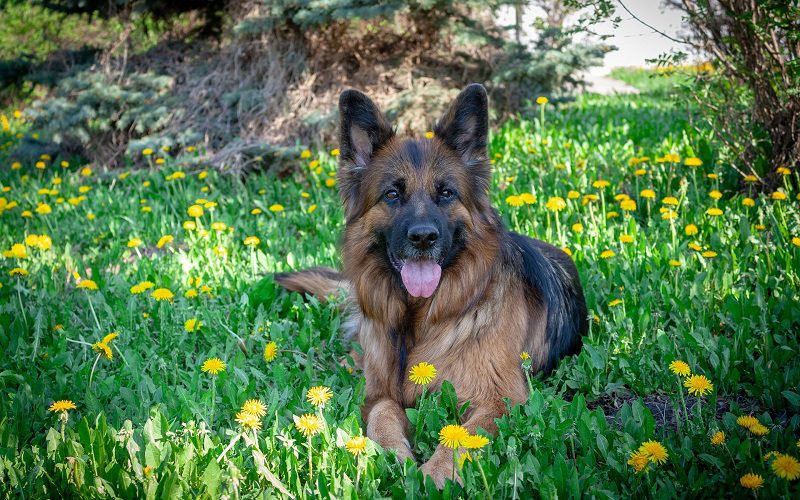
The King Shepherd looks a lot like the German Shepherd. However, it towers over the GS with a muscular body with a broad and deep chest that’s at least 29 – 32 inches tall.
Males can weigh up to 150 pounds while females, can weigh up to 110 pounds. But the increase in size is not at the expense of balance or proportion.
King Shepherds have long haired coats and may or may not have an undercoat.
The typical coat color is that of a German Shepherd, that is, tan with a black mask. However, Kings are available in a variety of colored coats including complete black, brown, grey and tricolored.
The marking designations are also varied. The typical black mask and back have been replaced by different types of markings including black heels, especially on the back of the leg.
The Temperament of the King Shepherd
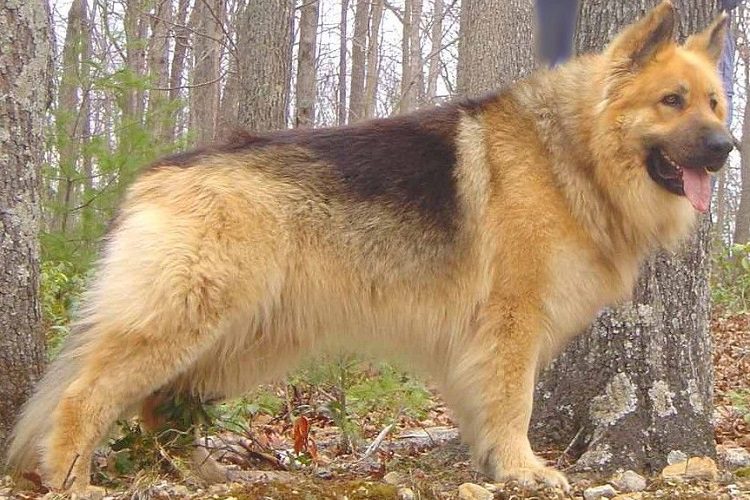
You may be surprised at the aloofness that a King Shepherd displays when you introduce him to your best friend or any stranger.
They do not kindle an instant friendship. However, they are not overly aggressive and a well trained dog can be friendly towards strangers too.
They have a very strong personality that is dominated by their fearlessness. Watch a King take a stride and you know that you have a confident dog. The musculature clubbed with the attitude make the King Shepherd an ideal all-purpose dog.
Put them in a farm and they can be alert and agile. As a watchdog, they are second to none. They have also been used as herding dogs and even as sniffer dogs in the armed forces. The King Shepherd is a very intelligent and alert dog.
This makes them one of the best dogs to have in just about any situation. At home, they are friendly and very easy to train. They are also one of the best dogs to have around children.
The King Shepherd has tons of stamina and will enjoy their playtime.
Living with the King Shepherd
If you have lived with German Shepherds before, then you can consider that the legwork of living with a King is more or less done.
They have a very similar temperament and somewhat common behavioral traits too.
Exercise
It goes without saying that a King Shepherd needs vigorous outdoor activity. This can be a brisk walk, a jog or even a run at least twice a day, possibly with some additional form of exercise thrown in.
As a working or herding dog, the King Shepherd usually receives enough exercise to ensure that its musculature is maintained.
However, if you have an urban home, ensure that the King Shepherd receives its daily dose of physical activity. Else, the dog can become restless, stubborn and destructive. This also means that this is not the ideal breed for apartment living.
Training
Being a highly intelligent dog breed, King Shepherds are easy to train provided that you know the basics. The most important and often overlooked part of the training process is to build a bond with the King.
These dogs love to please their owners and the relationship is built over a period of time on mutual trust. However, it is extremely important to define the boundaries from puppyhood.
A King Shepherd must be aware of the pack leader and an early start to training can help tremendously in socializing and even protection training, in its role as a watchdog or a herding dog.
Grooming
King Shepherds can either have a smooth or a coarse coat that demand frequent grooming. Irrespective of the type of the coat, there will be considerable shedding.
Usually, five to ten minutes of brushing every three to four days suffices to keep the coat free of knots. Bathing is only required when mandatory. The time and effort needed for grooming depends on the size of the hair. Usually, longer haired coats take more grooming.
Health and Common Conditions
King Shepherd is a recent entrant into the world of dogs and long term health studies are still underway. It is largely considered to be a healthy dog breed without any known health problems.
It has an average lifespan of 10-14 years. However, like most large sized dogs, hip dysplasia has been observed in King Shepherds as early as the 90s. A lot of pet parents and breeders now get a PENN Hip Evaluation done to remove this problem in King Shepherds.
This radiographic screening helps to detect the early onset of osteoarthritis. Other than this, there have been a few reported cases of eye problems in King Shepherds. These have been too few and far between to be considered as a possible problem in the dog.
Conclusion
The King Shepherd is a very smart dog with a friendly demeanor and a fearless personality. Selective breeding has also removed most health problems that are commonly seen with the German shepherd, its smaller sized cousin.
Athletic, agile and easy to train, it makes a perfect pet.
Resources:

